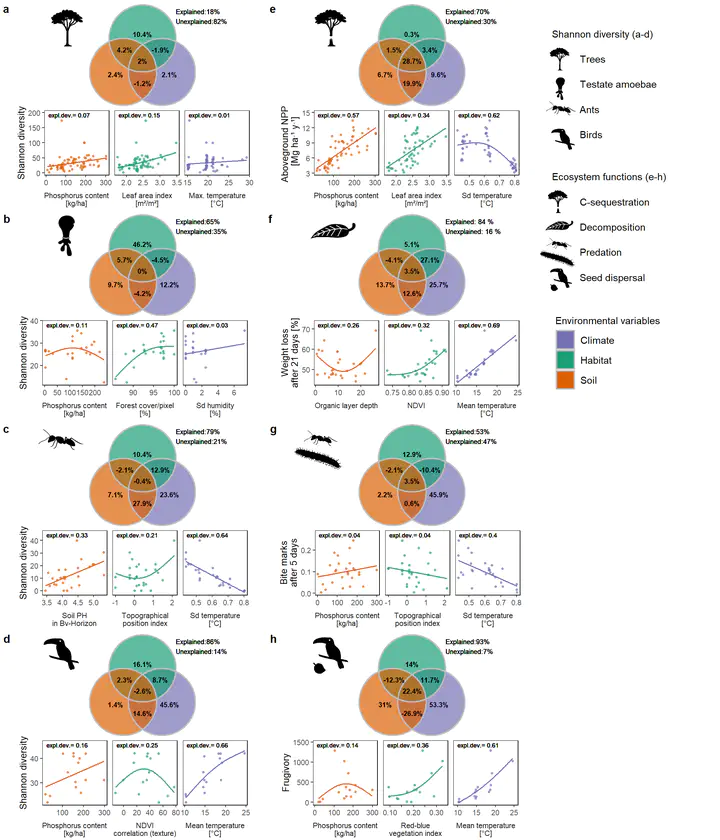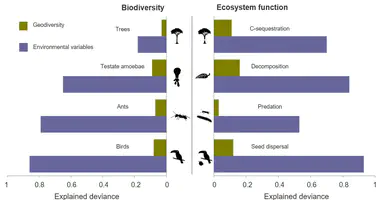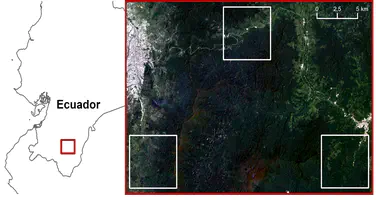Biodiversity and ecosystem functions depend on environmental conditions and resources rather than the geodiversity of a tropical biodiversity hotspot
 Relative importance of the three environmental variables accounting for conditions and resources from climate, habitat, and soil in explaining species diversity of four taxonomic groups
Relative importance of the three environmental variables accounting for conditions and resources from climate, habitat, and soil in explaining species diversity of four taxonomic groupsAbstract
Biodiversity and ecosystem functions are highly threatened by global change. It has been proposed that geodiversity can be used as an easy-to-measure surrogate of biodiversity to guide conservation management. However, so far, there is mixed evidence to what extent geodiversity can predict biodiversity and ecosystem functions at the regional scale relevant for conservation planning. Here, we analyse how geodiversity computed as a compound index is suited to predict the diversity of four taxa and associated ecosystem functions in a tropical mountain hotspot of biodiversity and compare the results with the predictive power of environmental conditions and resources (climate, habitat, soil). We show that combinations of these environmental variables better explain species diversity and ecosystem functions than a geodiversity index and identified climate variables as more important predictors than habitat and soil variables, although the best predictors differ between taxa and functions. We conclude that a compound geodiversity index cannot be used as a single surrogate predictor for species diversity and ecosystem functions in tropical mountain rain forest ecosystems and is thus little suited to facilitate conservation management at the regional scale. Instead, both the selection and the combination of environmental variables are essential to guide conservation efforts to safeguard biodiversity and ecosystem functions.

